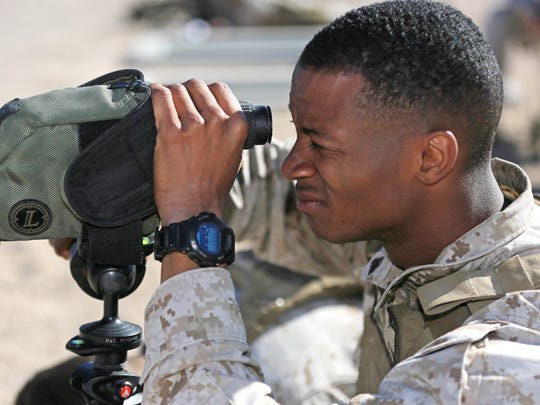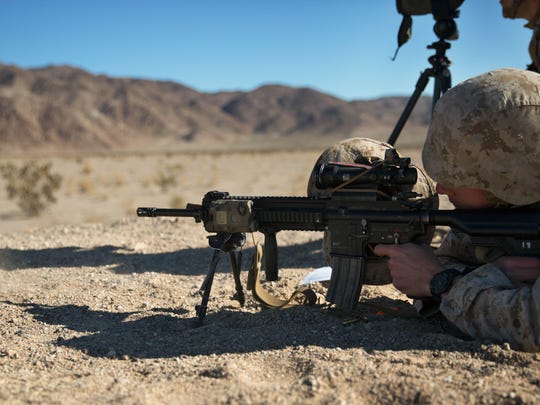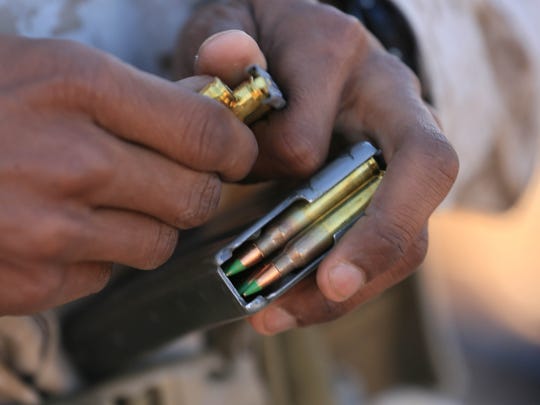TerraN_EmpirE
Tyrant King
This was released April 1st So I sat on it waiting to see what fell from the tree the the monkey or me.
The CSASS or Compact Semiautomatic Sniper system is a replacement for the M110 Semiautomatic sniper system. No word on configuration, I would almost Guarantee based on the HK 762 A2 which Germany adopted as the G28 rather then the pure Hk417 as the 417 is selective fire well the 762 is semiauto. Barrel length is likey 16 inches with a telescoping stock. OSS makes the Suppressor and Shmidt and Bender are close partners with HK likely tagging them for the Scope. The CSASS is targeted for a overall length of no more then 39 inches and with semiauto means that it would be a perfect package for US Army and USMC infantry as a replacement for the Mk14 and M39 designated marksmen rifles. that said the Marines have been said to be flirting with using the M27 (HK416) as a DMR and IAR Which I find sort of worrying.
Of course the Marines are not the only one looking to go back to a universal rifle just
Heckler & Koch to Produce New Army Sniper Rifle
April 6, 2016
Ashburn, Virginia —Heckler & Koch Defense Inc. was awarded a contract worth up to $44.5 million from the U.S. Army for a new compact sniper rifle. The Compact Semi-Automatic Sniper System (CSASS) will provide the service with a small, lightweight, highly accurate weapon, addressing a critical need to replace older and heavier rifles currently in use.
Under terms of the award, HK Defense will produce up to 3,643 rifles. The new HK rifle is a lightweight variant of the 7.62 mm G28 in use by the German Army. The HK CSASS capitalizes on the proven G28 design, meeting the Army’s requirements for accuracy, reliability, and size. Heckler & Koch will also provide spare parts, support, and training to the Army.
“This award represents another significant achievement for Heckler & Koch,”said Wayne Weber, President of Heckler & Koch USA. “The HK CSASS rifle is a substantial upgrade over the Army’s current sniper rifles, enhancing accuracy and reliability while providing for a handier, more compact arm. It also confirms Heckler & Koch as a leader in providing small arms to the U.S. military.”
The CSASS or Compact Semiautomatic Sniper system is a replacement for the M110 Semiautomatic sniper system. No word on configuration, I would almost Guarantee based on the HK 762 A2 which Germany adopted as the G28 rather then the pure Hk417 as the 417 is selective fire well the 762 is semiauto. Barrel length is likey 16 inches with a telescoping stock. OSS makes the Suppressor and Shmidt and Bender are close partners with HK likely tagging them for the Scope. The CSASS is targeted for a overall length of no more then 39 inches and with semiauto means that it would be a perfect package for US Army and USMC infantry as a replacement for the Mk14 and M39 designated marksmen rifles. that said the Marines have been said to be flirting with using the M27 (HK416) as a DMR and IAR Which I find sort of worrying.
West Coast Marines complete first M27 Designated Marksman Course
By Matthew L. Schehl, Marine Corps Times11:56 a.m. EST February 19, 2016
The Marksmanship Training Unit aboard Marine Corps Air Ground Combat Center Twentynine Palms, California, has completed the inaugural Designated Marksman Course for the M27 Infantry Assault Rifle, the first of its kind for West Coast Marine infantrymen.
Over the three-week course that ended Jan. 28, about a dozen Marines in two-man shooter-spotter teams from 3rd Battalion, 7th Marines, and 3rd Battalion, 4th Marines, honed their abilities to use the IAR to identify and engage targets up to 600 yards.
As an organic asset supporting tactical movement, riflemen acting as marksmen for a squad need the ability reach out and touch a target, said 1st Lt. Lauren Luther, officer in charge of the marksmanship unit and chief instructor for the course.
“It’s about finding what the Marines ‘doing the do’ — the maneuver units, the rifle companies and rifle platoons — need to be more deadly,” she said. “Marines at the squad level aren’t leaving the wire with match-grade ammunition, good optics or a sniper rifle, they’re leaving the wire with an IAR, green-tip ammunition and a [standard day optic]; [we wanted] to cover down on what they actually need.”
The IAR was initially fielded in December 2010 to replace the M249 Squad Automatic Weapon as the standard automatic weapon within all Marine rifle squads.

Cpl. Robert Ellis, a rifleman with 3rd Battalion, 4th Marines, spots targets for his shooter. (Photo: Cpl. Julio McGraw/Marine Corps)
At half the weight of the SAW, with a lighter ammunition load and greater accuracy over similar ranges, the IAR gives Marine infantry better mobility and lethality.
There are 4,153 IARs fielded across the force, said Maj. Anton Semelroth, a spokesman for Marine Corps Combat Development Command.
Marine infantry riflemen are formally taught the basics of the IAR when they attend one of the Corps’ two infantry schools, either at Camp Geiger, North Carolina, or Camp Pendleton, California. Any advanced training, however, is left to operational units.
Basic IAR training "culminates in an evaluated course of fire, using both semi-auto and full auto engagements at various ranges, from both supported and unsupported positions,” said 1st Lt. Matt Rojo, public affairs officer for Marine Corps Training Command. “It does not result in a ‘designated marksman’ skill set or certification.”
MTU’s Designated Marksman Course set out to provide this at Twentynine Palms, offering in-depth instruction in accurately estimating ranges with the naked eye, optics, ballistics and battlefield observation, as well as firing on known- and unknown-distance targets.
Range estimation by eye in particular is a lost art form, Luther said, and with not a lot of resources available, he ended up turning to a British Royal Marines publication from the 1920s to prepare the course.

Cpl. Jared Ingerson, a rifleman with 3rd Battalion, 4th Marines, fires his M27 IAR during the culminating event of the Designated Marksman Course on Jan. 28. (Photo: Lance Cpl. Levi Schultz/Marine Corps)
“You’d be shocked at how bad Marines are at guessing, like 700 meters for a target that was at 275 meters,” she said. “Range estimation comes into everything we do, whether it’s call for fire, small-arms marksmanship or setting a cordon for an [improvised explosive device]; it can be taught, but it’s a very perishable skill.”
The course culminated in a real-world scenario in which each shooter-spotter team went out to the field at Range 113 at Twentynine Palms.
They were allowed 40 minutes to positively identify 10 targets at ranges between 275 and 600 yards, taking conditions such as terrain, sunlight and wind speed into consideration.
When the 40 minutes were up, the shooter engaged each target; if he missed any, he was given three seconds to adjust and re-engage.
“It was a great experience,” said Cpl. Robert Ellis, a rifleman with Weapons Company, 3rd Battalion, 4th Marines. “The instructors were definitely very knowledgeable; they gave us ample time to learn the material and a lot of hands-on time with the weapon system and engaging targets.”
Lance Cpl. Colton Rine, Ellis’ shooter-spotter partner and fellow rifleman with 3/4 Marines, agreed and said the instruction gave him a step up as a rifleman for his squad when he returned to his home unit.

Cpl. Robert Ellis loads an M27 Infantry Automatic Rifle magazine with 5.56 mm rounds during the Designated Marksman Course’s culminating event. (Photo: Cpl. Julio McGraw/Marine Corps)
“I had a lot of fun with it,” he said. “It helped a lot getting those skills up and preparing you for the future; it’s training you can bring back and teach your team.”
The idea of Marines being able to share the knowledge and skills gained — "training the trainer" — was intentionally built into the course’s design, Luther said.
“We invested a lot of time in making them confident in communicating what they learned so they can go back to their squad and be that subject matter expert and be a force multiplier at the small-unit level,” she said.
Luther said the goal is to offer the course once every two months.
MTU intends to make the training available to Marines rotating through Twentynine Palms for training, such as units going through Integrated Training Exercises at the Combat Center.
“If they want to send selected Marines from squads to participate in the designated marksmanship training, we’d be more than happy to accommodate that,” she said.
Of course the Marines are not the only one looking to go back to a universal rifle just











